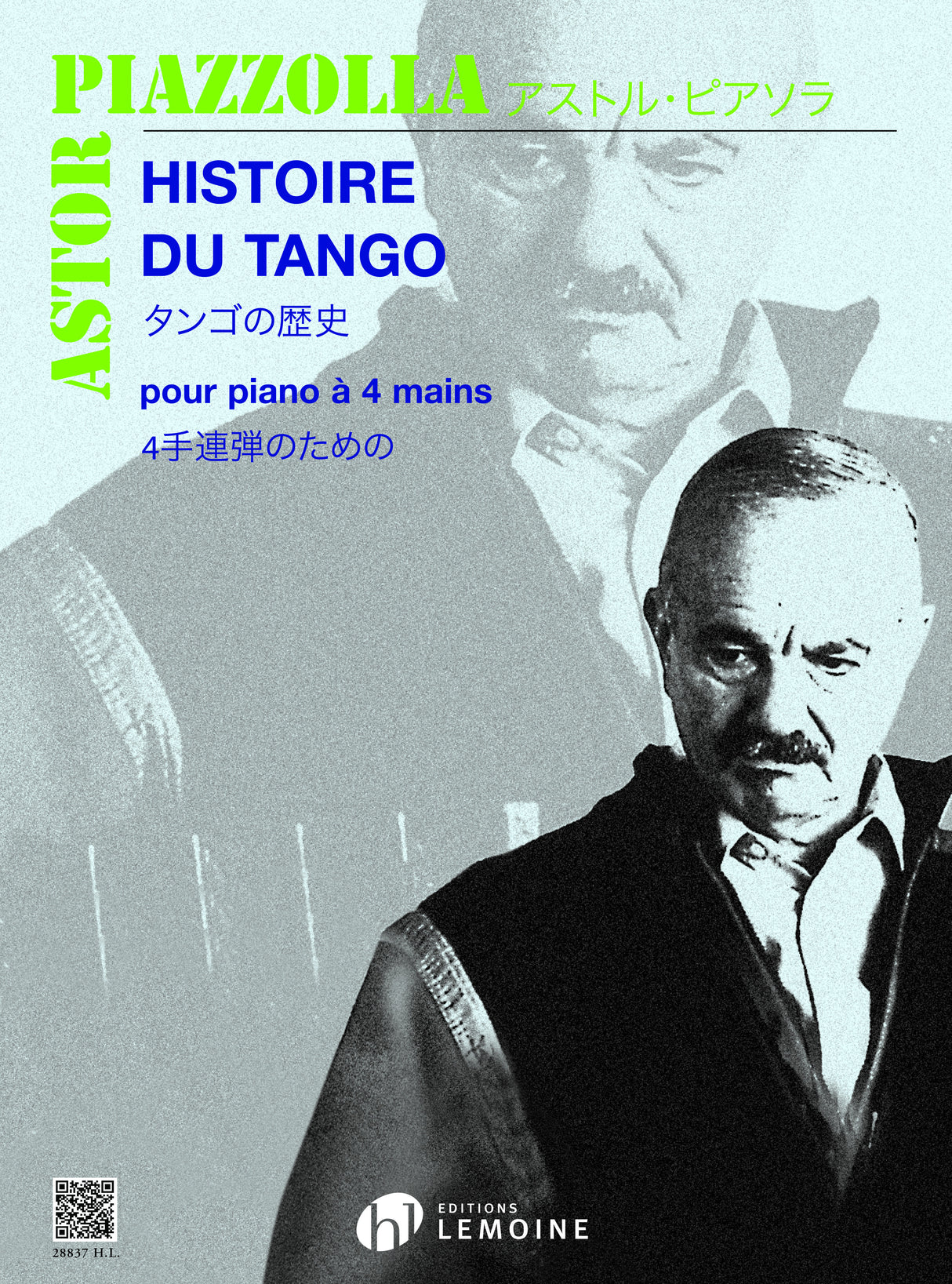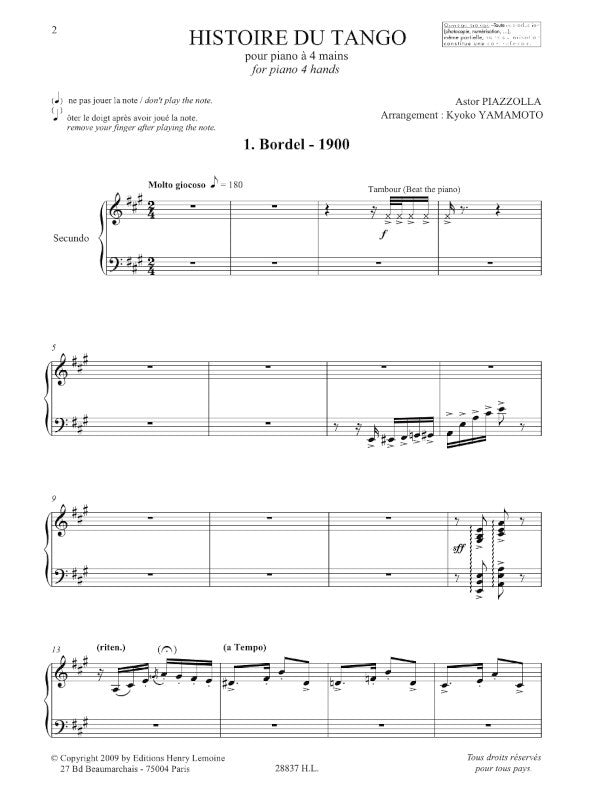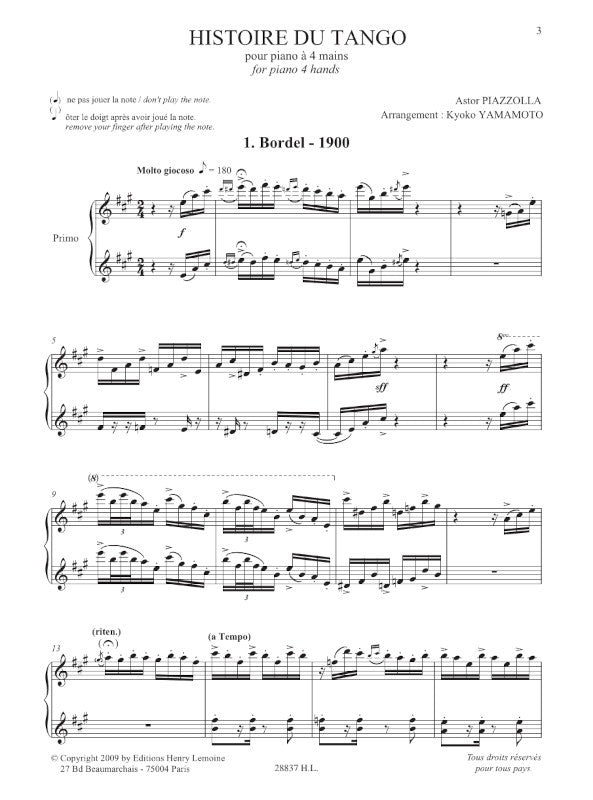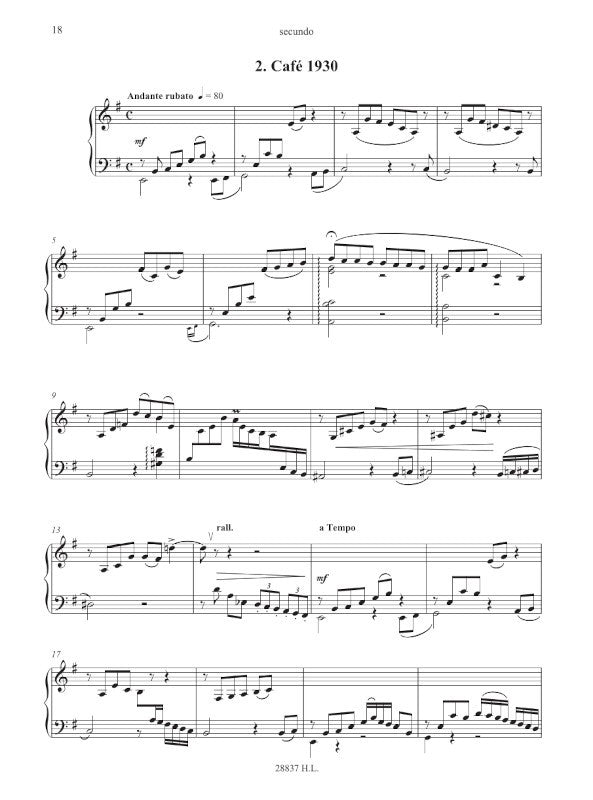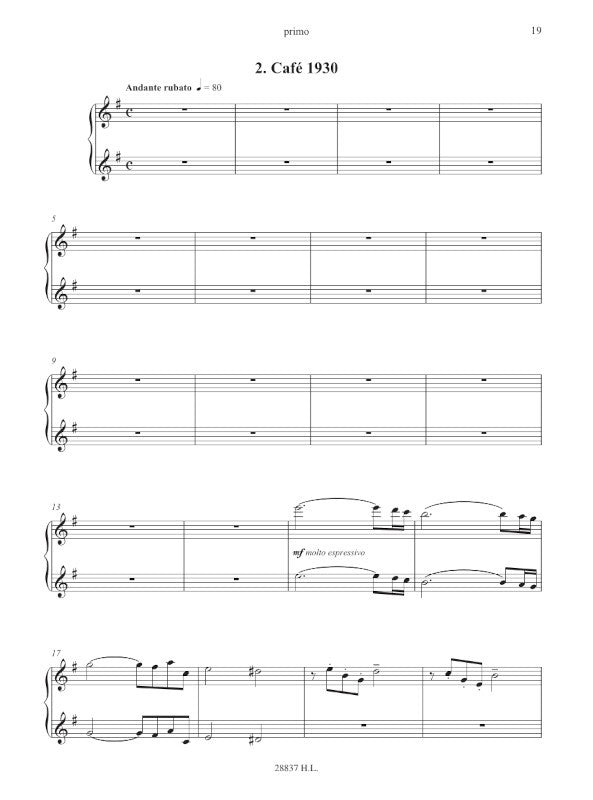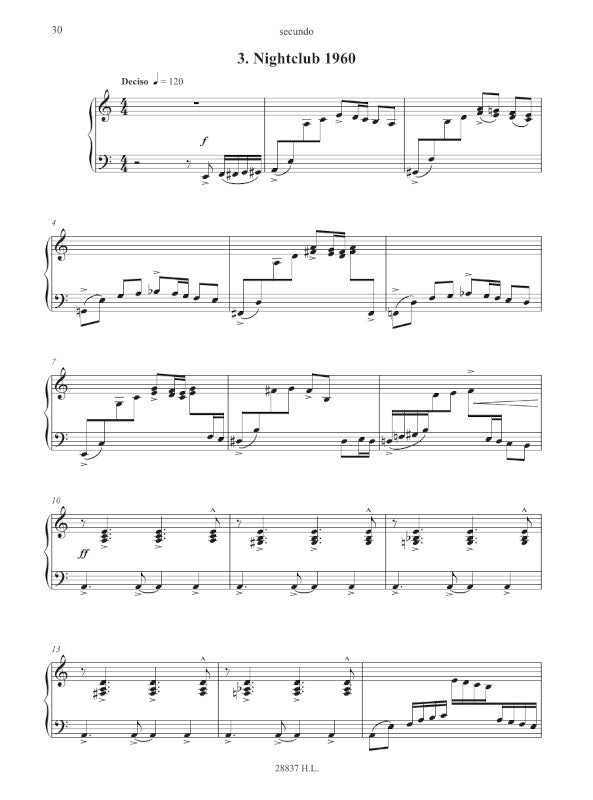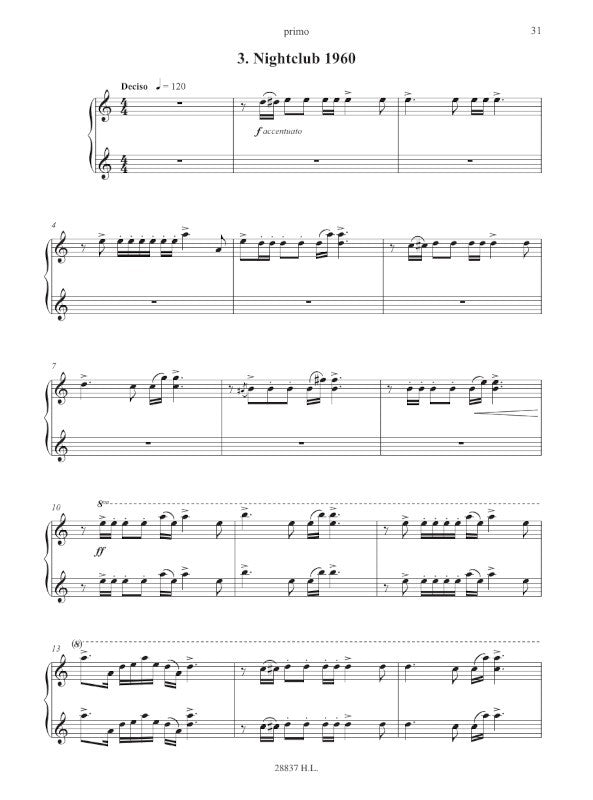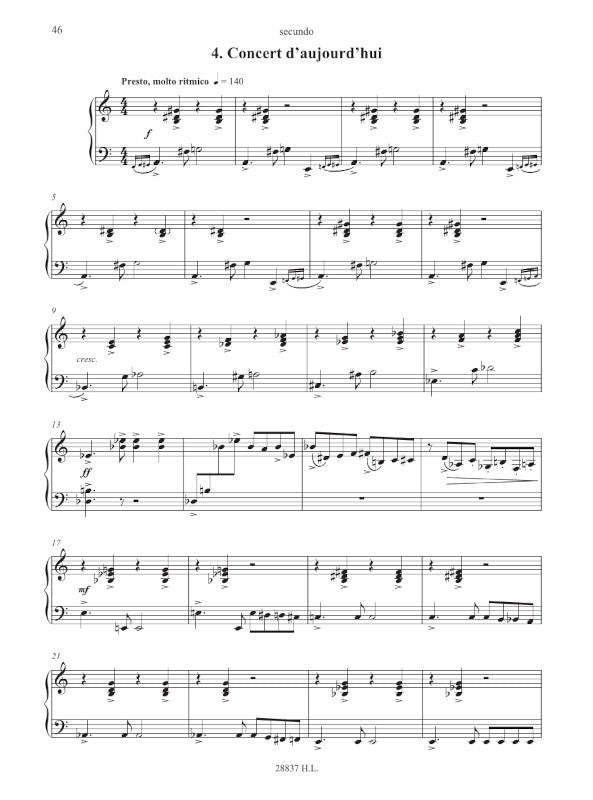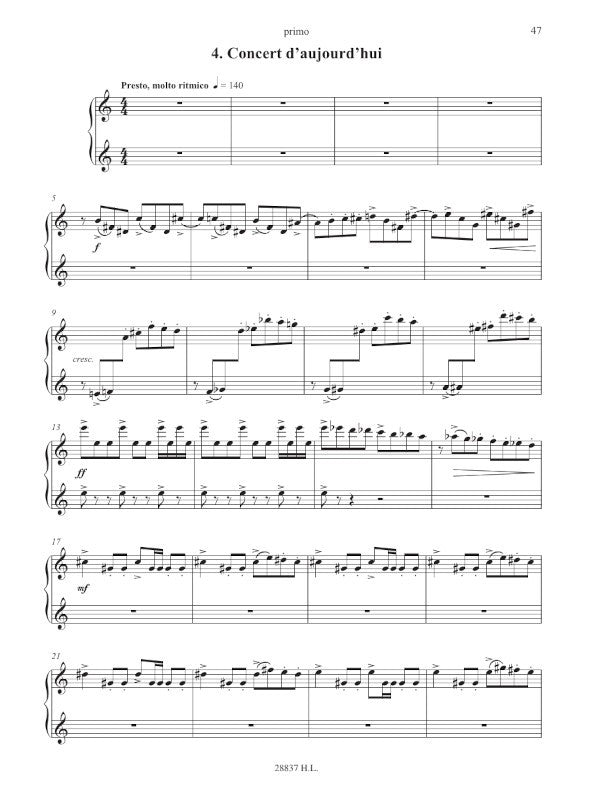Piazzolla: Histoire du tango (for piano 4-hands)
In stock and typically ships within 1 business day.
- Composer: Astor Piazzolla (1921-1992)
- Arranger: Kyoko Yamamoto
- Instrumentation (this edition): Piano 4-Hands
- Originally for: Flute, Guitar
- Work: Histoire du tango (1986)
- ISMN:
- Size: 9.1 x 12.2 inches
- Pages: 56
Description
Arrangement for piano 4 hands by Kyoko Yamamoto.
Bordel 1900: The tango was born in Buenos-Aires in 1882. It was first played on the guitar and the flute. The piano was added later, followed by the bandoneon. It is music full of charm and vivacity, that gives the impression of the good spirits and volubility of the French, Italian and Spanish women who lived in these brothels, enticing the policemen, thieves, sailors and hoodlums who visited them. The tango is cheerful.
Café 1930: This is a different era of the tango. People no longer danced to it, as in the 1900s and became satisfied by just listening, which allowed for a more musical and romantic evolution. This was a radical transformation. The tango became slower, more melancholic, and incorporated new harmonies. Tango orchestras were made up of two violins, two bandoneons, a piano and a double bass. Sometimes it was sung.
Night-club 1960: A new evolution was witnessed during this period, in which international exchange increased considerably. Brazil and Argentina met in Buenos-Aires - bossa nova and the new tango were "same battle". The public flocked to the nightclubs to listen earnestly to the new tango - a revolution and profound disruption of certain forms of old tango.
Concert d'aujourd'hui: Certain concepts join tango music with contemporary music, such as recollections by Bartok, Stravinsky and several others on a tango base. This is today's tango, the tango of the future...
Publishers use a lot of words to describe what they sell, and we know it can be confusing. We've tried to be as clear as possible to make sure you get exactly what you are looking for. Below are descriptions of the terms that we use to describe the various formats that music often comes in.
Choral Score
A score for vocalists that only contains the vocal lines. The instrumental parts are not there for reference. Generally, cheaper than a vocal score and requires multiple copies for purchase.
Facsimile
Reproductions of the original hand-written scores from the composer.
Full Score
For ensemble music, this indicates that the edition contains all parts on a single system (there are not separate parts for each player). In larger ensembles, this is for the conductor.
Hardcover
Hardbound. Generally either linen-covered or half-leather.
Orchestral Parts
Similar to a wind set, this is a collection of parts. In the case of strings, the numbers listed are the number of copies included, though generally these are available individually (often with minimum quantities required).
Paperback
When publishers offer multiple bindings (e.g. hardcover) or study scores, this is the "standard" version. If you're planning to play the music, this is probably what you want.
Performance / Playing Score
A score of the music containing all parts on one system, intended for players to share. There are not separate parts for each player.
Set of Parts
For ensemble music, this indicates that there are separate individual parts for each player.
Solo Part with Piano Reduction
For solo pieces with orchestra, this is a version that contains a piano reduction of the orchestra parts. For piano pieces, two copies are typically needed for performance.
Study Score
A small (think choral size) copy of the complete score meant for studying, and not playing. They make great add-ons when learning concertos and small chamber works.
Vocal Score
A score prepared for vocalists that includes the piano/organ part or a reduction of the instrumental parts.
Wind Set
For orchestral music, this is a collection of wind and percussion parts. The specific quantities of each instrument are notated.
With Audio
In addition to the printed music, the edition contains recordings of the pieces. This may be an included CD, or access to files on the internet.
With / Without Fingering (Markings)
Some publishers prepare two copies - a pure Urtext edition that includes no fingering (or bowing) suggestions and a lightly edited version that includes a minimal number of editorial markings.
